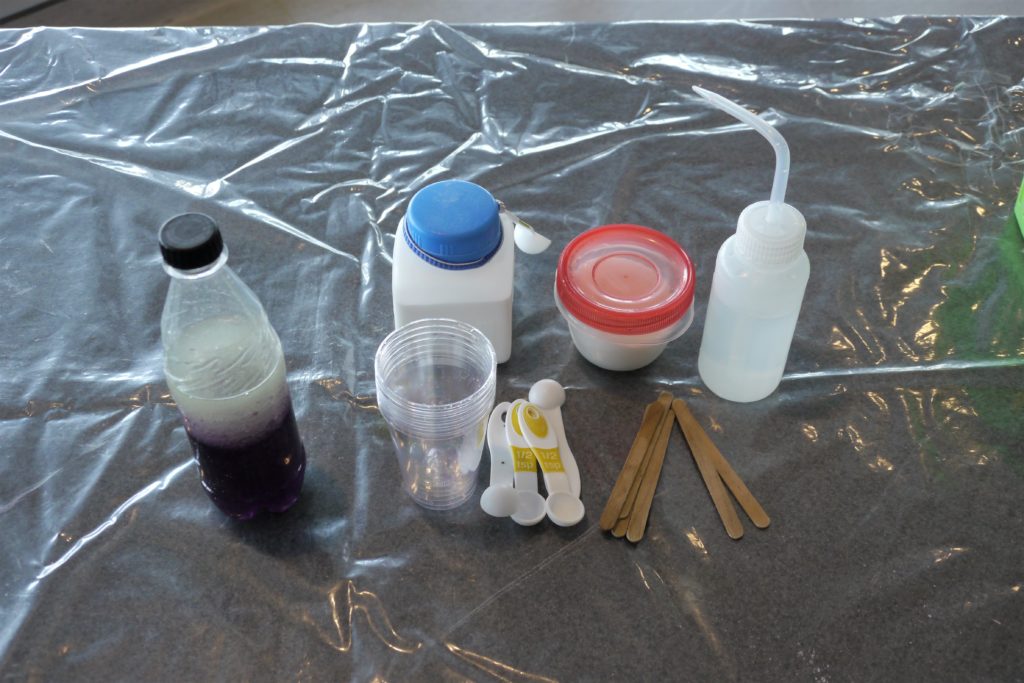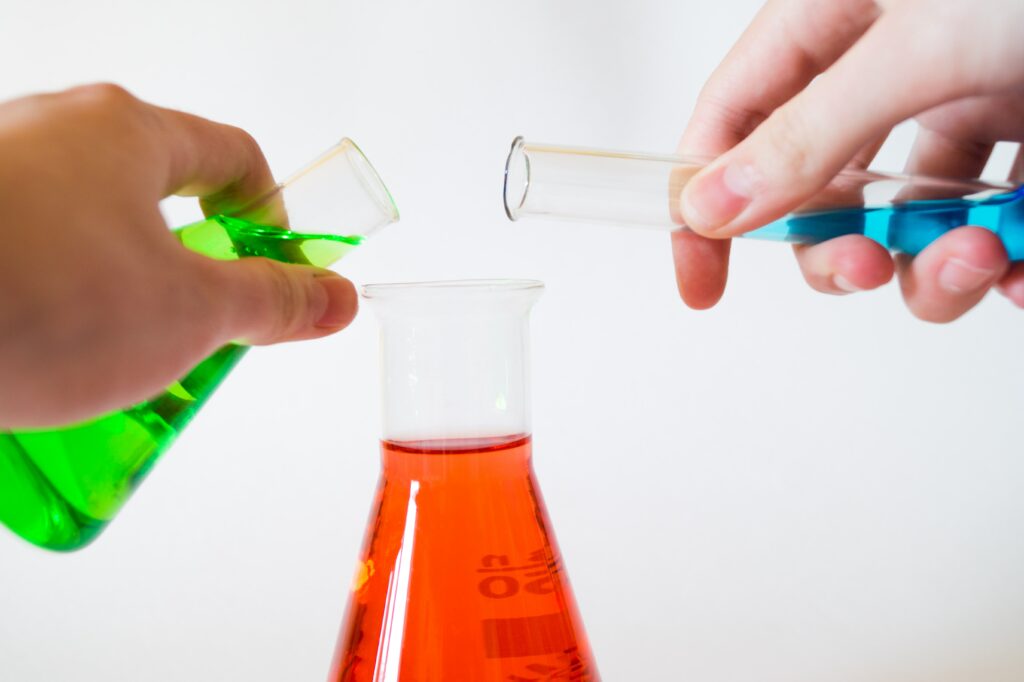When polyox (polyethylene oxide) mixes with water, its oxygen atoms can attach to hydrogen atoms in the water, setting up lots of chains in many directions.
This chain structure is called a polymer.
Because polyethylene oxide has a lot of oxygen atoms on the chain, there are lots of opportunities for binding. The resulting gel is very thick because its molecules like to stick together, a process called cohesion. Strong cohesion properties can also impact how a fluid flows and in fact, polyox does not flow like other liquids.
Polyox is self-siphoning; once you start pouring it from one cup to another, it will continue the process even if you tilt the first cup back up. This video explains this phenomenom nicely using a long chain of beads to illustrate the polymer structure of polyox.
Polyox is also a non-Newtonian fluid which becomes thinner when stressed unlike Ooblek which thickens under stress.

